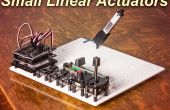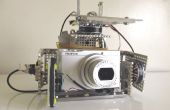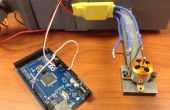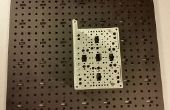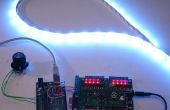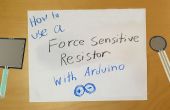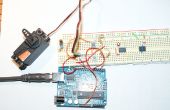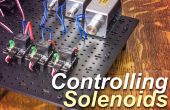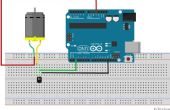Stap 3: Code 1 - handbediening
Deze code laat zien hoe om te doen basic handmatige bediening van een grote Lineaire servomotor met behulp van een Arduino en twee knoppen. De eerste knop breidt de bedieningssleutel en de tweede trekt de actuator.
U kunt de code schets hier downloaden: https://github.com/robotgeek/largeLinearManualButton/archive/master.zip
/* Manual Linear Actuator Control using an Arduino and two pushbuttons This demo shows how to do basic manual control of a large linear actuator using an Arduino and two buttons. The first button extends the actuator and the second retracts the actuator. The circuit: * RobotGeek Pushbutton - Digital Pin 2 * RobotGeek Pushbutton - Digital Pin 4 * RobotGeek Relay - Digital Pin 7 * RobotGeek Relay - Digital Pin 8 Products Used in this demo: - http://www.robotgeek.com/linear-actuators - http://www.robotgeek.com/robotgeek-geekduino-sensor-kit - http://www.robotgeek.com/robotGeek-pushbutton - http://www.robotgeek.com/robotgeek-relay */ // constants won't change. They're used here to set pin numbers: const int button1Pin = 2; // the number of the pushbutton1 pin const int button2Pin = 4; // the number of the pushbutton2 pin const int relay1Pin = 7; // the number of the Realy1 pin const int relay2Pin = 8; // the number of the Relay2 pin // variables will change: int button1State = 0; // variable for reading the pushbutton status int button2State = 0; // variable for reading the pushbutton status const int sensorPin = 0; // select the input pin for the potentiometer int sensorValue = 0; // variable to store the value coming from the sensor void setup() { //start serial connection Serial.begin(9600); // initialize the pushbutton pin as an input: pinMode(button1Pin, INPUT); pinMode(button2Pin, INPUT); // initialize the relay pin as an output: pinMode(relay1Pin, OUTPUT); pinMode(relay2Pin, OUTPUT); } void loop(){ // read the value from the sensor: sensorValue = analogRead(sensorPin); //print out the value of the pushbutton Serial.println(sensorValue); // read the state of the pushbutton values: button1State = digitalRead(button1Pin); button2State = digitalRead(button2Pin); // check if the pushbutton1 is pressed. // if it is, the buttonState is HIGH: // we also ensure tha the other button is not pushed to avoid conflict if (button1State == HIGH && button2State == LOW) { // turn relay1 on: digitalWrite(relay1Pin, HIGH); } // When we let go of the button, turn off the relay else if (digitalRead(relay1Pin) == HIGH) { // turn relay1 off: digitalWrite(relay1Pin, LOW); } // repeat the same procedure for the second pushbutton if (button1State == LOW && button2State == HIGH) { // turn relay2 on: digitalWrite(relay2Pin, HIGH); } // When we let go of the button, turn off the relay else if (digitalRead(relay2Pin) == HIGH) { // turn relay2 off: digitalWrite(relay2Pin, LOW); } }
